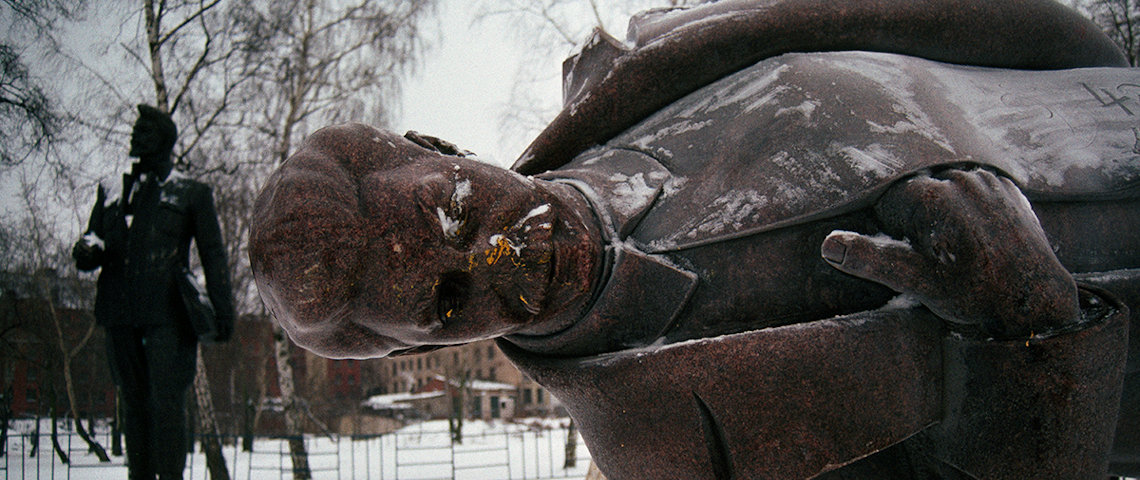History was proclaimed “ended” when, between 1989 and 1991, socialism was overthrown in the former Soviet Union and Eastern Europe. It was a historic setback for the working class around the world, dismembering the socialist community and tilting the world balance of forces sharply in favour of imperialism.
Almost immediately, the most powerful capitalist states began the process of redividing the world’s territory amongst themselves, starting with the former socialist states. This global imperialist reconfiguration also included the tightening and internationalization of the US blockade against Cuba, the 1991 Gulf War and subsequent decade of sanctions against Iraq and the massive NATO bombardment of the former Yugoslavia in 1999.
Furthermore, unencumbered by real, existing socialism, capitalist governments around the world adopted neoliberal policies to roll back all of the economic, social and political gains achieved by the working class and its democratic allies over the previous half century. Mass privatizations, deep cuts to social programs and sweeping rollbacks to labour and democratic rights were the order of the day in virtually every capitalist country.
The overthrow of socialism and the capitalist counterattack had a staggering ideological impact on the working class globally. Many socialist-minded people began to question the possibility of winning working-class power and constructing socialism in these new conditions.
In Canada, these international developments sparked a profound crisis inside the ranks of the Communist Party of Canada (CPC). In the period between 1988 and 1992, a small group within the highest leadership abandoned Marxism-Leninism as the basis of the Party’s revolutionary perspective and eventually moved to liquidate the CPC itself, seeking to replace it with a left social-democratic formation. In the process, they shut down the Party press (The Tribune) and publishing operations, laid off Party organizers across the country, dissolved the Young Communist League, dismissed elected committees and expelled dozens of members including two founding members of the CPC.
Most of the membership however actively resisted this rightward, revisionist and liquidationist policy and ultimately prevailed in saving the Communist Party of Canada. But the costs of this protracted ideological and political crisis were high – the Party’s independent and mass work was paralyzed for over two years, its membership was reduced and many of its organizational structures were lost.
What emerged within the CPC in this period was not an isolated phenomenon, but part of a pattern that developed worldwide – inside and outside of the system of socialist states. This pattern represented not just opportunism but an attack on working-class politics – it was a counter-revolutionary development. In the European socialist states, that meant a defeat of the socialist state itself. While the socialist state was overthrown in some cases, officials announced its demise and proceeded to dismantle social ownership and working-class hegemony of the state in others.
In the non-socialist world, these developments meant various forms of what is referred to as liquidationism – activities within a communist party that would bring about its destruction as a revolutionary party. This includes turning it into a social-democratic or broad-left party or a collection of like-minded people in some amorphous grouping without real structure or direction. In Canada, it became clear that if those who wished to transform the Communist Party were successful, there would be nothing left. Certainly, if there had been some remnant of a party or other formation, it would not have carried the banner of revolutionary working-class politics, a banner that had been carried by the CPC.
In both the socialist and non-socialist world, this growth of counter-revolutionary ideas reflected the success of bourgeois ideology combined as it was with enormous economic power, cultural domination and military might. The use of these weapons was both overt and covert and the international capitalist class was able to turn back the forces of working-class political power in the European states where it had achieved considerable success, surviving a civil war in the USSR, defeating fascism, addressing the social needs of their societies and building a modern industrial state. While that reversal is temporary, in its historical context, it was monumental at the time that it was happening, and it continues to shape the character of international politics.
The consequences of this defeat were most destructive for the working classes of those socialist states who saw their living standards collapse and the social services which they had created, the social capital which they had produced, destroyed in a matter of years. Social inequality on a scale and magnitude inconceivable within socialism emerged as if already fully formed.
In the non-socialist world, capitalist ideology was able to strengthen and extend its hold, including among those who saw themselves as anti-capitalist. The demise of the European system of socialist states had a devastating impact on the strength and development of progressive forces and this impact was magnified within some communist parties where the defeat spurred the growth of anti-Leninist attitudes and ideas. It raised questions about how best to achieve change. In a number of those parties, the answer was to move towards a reformist approach and to embrace the flawed idea that fundamental change could be accomplished with incremental improvements over time without ever having to break the foundation of the rule of the capitalist class.
That is in essence the character of the struggle that developed within the Communist Party of Canada. A number of those who had declared themselves anti-capitalist either were or became advocates of bourgeois values and ideas. They accepted the bourgeois definitions of democracy which defined socialist societies as anti-democratic. They agreed with bourgeois ideologues that rather than a higher form of democracy, democratic centralism was anti-democratic, serving to stifle debate and individual integrity. They revised their previously professed opinions of Marxism-Leninism and capitulated to the notion that these were dogmatic concepts and expressions of elitism and ideological rigidity.
In the particular case of the CPC, they claimed that a new, more vital, broad, dynamic and more democratic formation was in the offing. They argued that masses of people were eager and willing to participate in such a venture if only the existing Party could rid itself of all those qualities which they now disavowed and disparaged. Those within the Party who sought to bring about this “revitalization” planned to turn the CPC into a loose association of some existing Party members along with a collection of left intellectuals and academics who were committed to social justice, but hostile to the basic concepts of not only Leninism but often to Marxism as well.
No one would suggest that individuals who join the Communist Party must never change their opinions, political beliefs or adherence to a particular set of principles. The problem was that the particular small group in the leadership who had changed their minds did not just leave the Party as many had done in the past but decided to take the Party with them. They sought to utilize the considerable assets garnered through years of commitment and sacrifice on the part of thousands of Party members, dead and alive, by transferring those funds to this new “creation.” They believed this new formation was achievable, but it proved in reality to be a mirage – a miasma of false hopes and faulty analysis.
That it was a false hope and a faulty analysis there can be no doubt. No such formation appeared. No new grouping of non-Leninist leftists emerged. The landscape of the left in Canada was not enhanced or expanded by their efforts. In fact, it was diminished. This utter failure was despite the financial resources which they took with them.
As one combatant in this struggle put it, “those whose goal is liquidation do not announce that they are trying to liquidate the Party, they do it by challenging its precepts and principles – Marxism and Leninism.” This challenge was done by calling into question the value of those ideas by suggesting that they are outdated, irrelevant, inapplicable or elitist. The proponents of liquidation argued that the destruction of the socialist states was proof that the ideas were fatally flawed.
It doesn’t matter whether or not they consciously sought to liquidate the Party, although the documents indicate that some if not all of them were seeking precisely that outcome. It doesn’t matter if they thought that they were going to transform it into something more “modern” or “relevant.” The best of motivations, justifications and intentions – everyone knows what is paved with those. What matters is what would have been the consequences of their actions and the results of their proposals for change. The result would have been the destruction of the Communist Party, the destruction of a party based on historical materialism and Leninist principles of organization.
But the success of the liquidationist “project” was doomed from the outset. There can be no other explanation for their failure to create what was said to be not just possible, but so certain as to be worth their efforts to destroy what existed. They presented the case that such a new formation would emerge if only they could rid themselves of the strictures of a Marxist-Leninist party.
And it did not.
Instead, the Party survived, recovered and grew. Working-class revolutionaries met the challenge of liquidation just as they have met every other challenge over the past 100 years – from a consistent and principled Marxist-Leninist perspective – and defeated it.
Striding into its second century, the CPC continues to hold its red banner high and proclaim that Canada’s future is socialism.
[hr gap=”10″]
Get People’s Voice delivered to your door or inbox!
If you found this article useful, please consider subscribing to People’s Voice.
We are 100% reader-supported, with no corporate or government funding.




